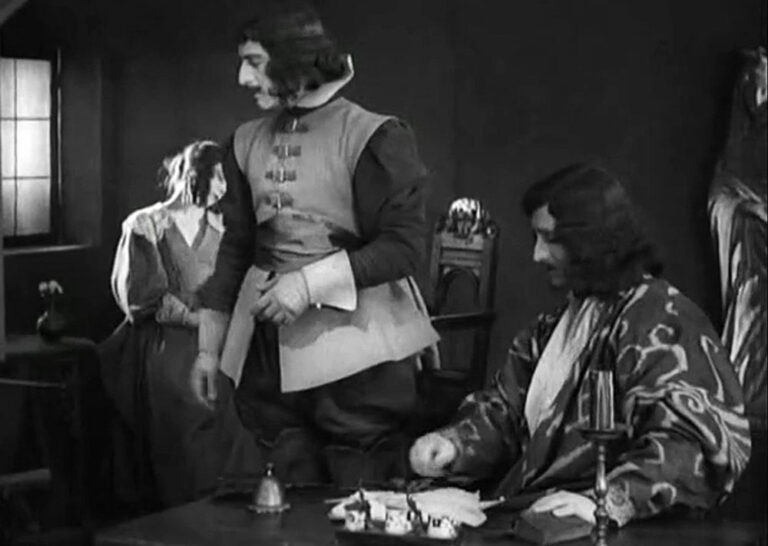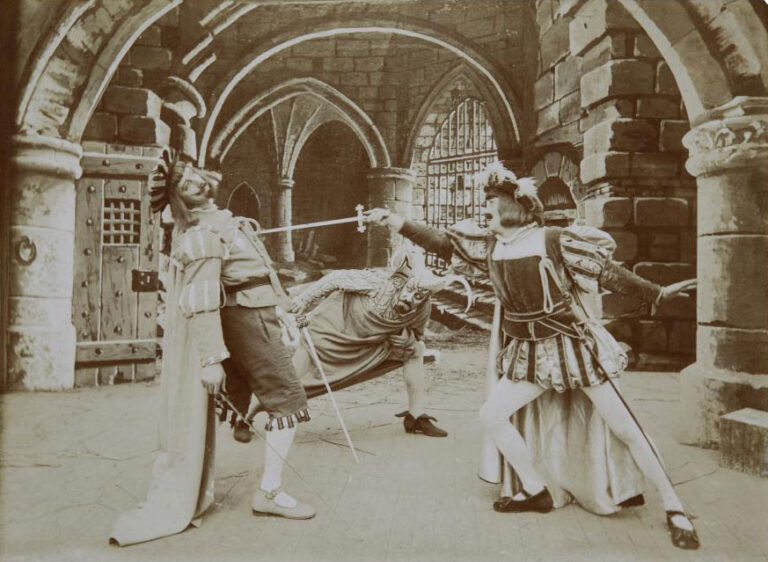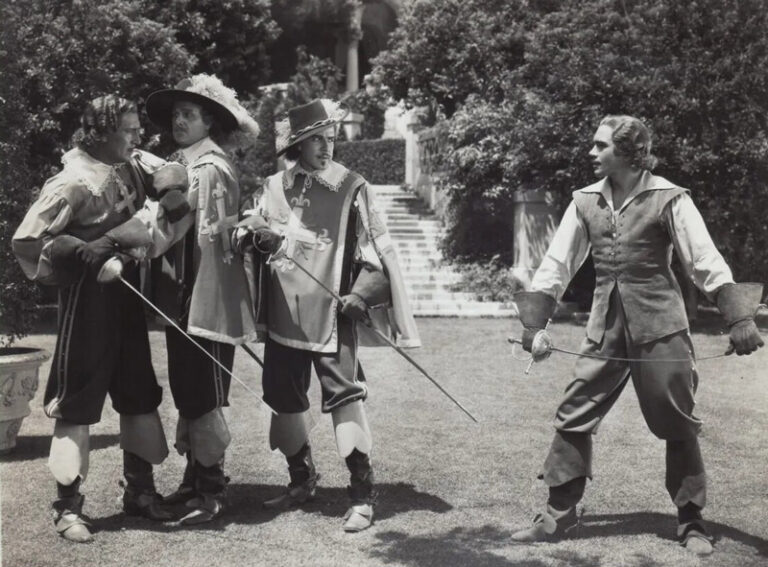The musketeer showcase
The beginnings of cinema on the Musketeers (1900s-1950s)
The legacy of this pioneering era
The first film adaptations of The Three Musketeers laid the foundations for a rich legacy. They popularised Dumas’s characters, paving the way for increasingly ambitious and varied interpretations in the decades that followed. Despite its technical constraints, the cinema of the years 1900-1950 was able to capture the spirit of camaraderie and adventure that defined the Musketeers, making these works an essential starting point for all lovers of historical cinema.
The first silent adaptations: the emergence of a screen myth (1900s-1930s)
The adventures of Dumas’s Musketeers were first represented in film at the dawn of the 20th century, in the era of silent cinema. From 1903, the popularity of novels inspired short works such as the one produced by Georges Méliès. These adaptations often focus on emblematic scenes, such as duels or court intrigues, because of the technical constraints of the time. In 1921, Henri Diamant-Berger marked a turning point with an ambitious multi-episode version, featuring a detailed narrative and spectacular sets. This work has been praised for its faithfulness to the novel and its scope, albeit limited by the absence of audible dialogue.
The Three Musketeers (1911)
The Three Musketeers (1921)
The Queen’s Musketeers (1903)
The transition to talking pictures: a narrative revolution (1930s-1940s)
The arrival of talking pictures in the 1930s opened up new possibilities for adaptations. Dialogue, essential in Dumas’s novels to capture the wit and humour of the characters, finally finds its place on screen. In 1935, Hollywood seized on the myth with The Three Musketeers, an adaptation which, though free, established The Musketeers in the international collective imagination. The soundtrack and vocal performances add unprecedented dramatic depth, making the plots of Richelieu and Milady even more compelling.
The Three Musketeers (1939)
The Three Musketeers (1935)
The Three Musketeers (1932)
The golden age of international adaptations (1940-1950)
During the 1940s and 1950s, the Musketeers established themselves as universal heroic figures. These years saw some polished productions, such as the American version directed by George Sidney in 1948, starring Gene Kelly and Lana Turner, which benefited from substantial budgets and a prestigious cast. This film stands out for its desire to incorporate a faithful historical aesthetic, while injecting a dynamic energy that is typical of entertainment cinema. More and more international adaptations (Italy, Mexico…) are beginning to enrich the legend of the Musketeers, exploring more romantic or comic styles.











